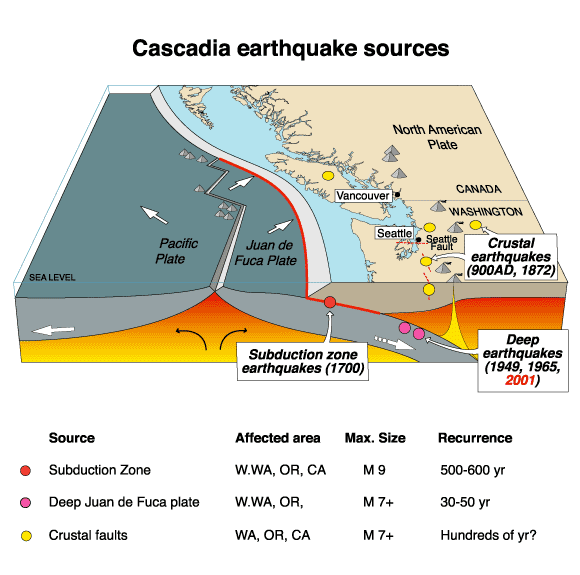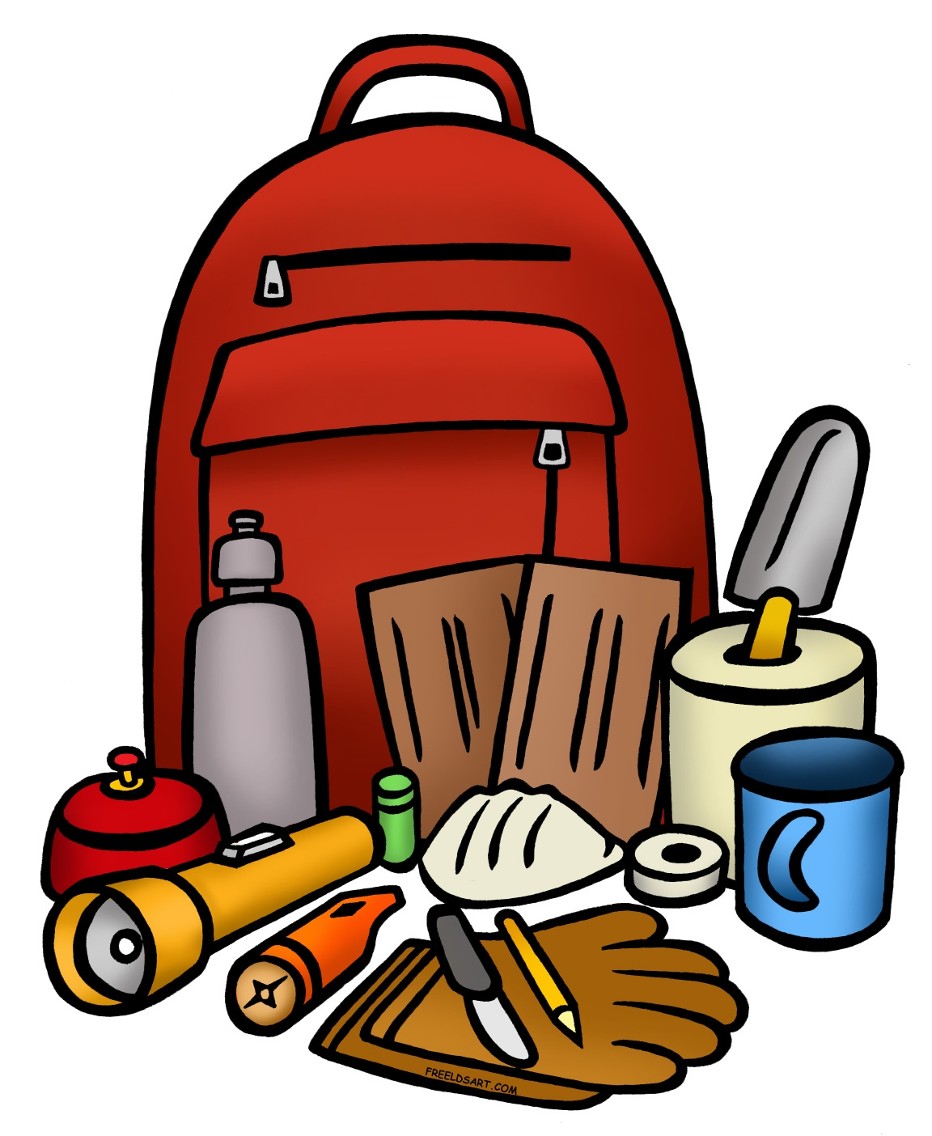 |
1. We know major earthquakes would occur in the area along the Cascadia subduction zone with the epicentre being near Haida Gwaii in the Juan de Fuca straight based on the evidence of past earthquakes. Vancouver is situated in a seismically active region where massive and destructive earthquakes have occurred in the past. A major earthquake could occur at any time. The Metro Vancouver region lies at the forefront of the North American plate and on the western edge of the plate, the Juan de Fuca plate is subducting beneath and is slowing deforming the continent. Which is why major earthquakes are able to occur in Metro Vancouver.
2. The geological setting makes this densely populated region susceptible to frequent seismic activity. This area also has increased risk of disastrous megathrust earthquakes. The Metro Vancouver region is surrounded by the Coast Mountains and the Pacific Ocean making it isolated and vulnerable during a large earthquake.
 |
https://www.youtube.com/watch?v=Bq1VHnq0Yvk - Video link of city of Vancouver : Are you prepared for an earthquake ?
3.a)
i) During seismic shaking; groundwater, sand and soil combine to form liquefaction during a powerful earthquake. The result of this process is quicksand like soil. This is a hazard because buildings that have liquefaction under it, can potentially sink and the buildings would collapse. Collapsing infrastructure not only damages the city or area but is a hazard for the lives of humans or animals.
 |
iii) One of the most dangerous effects of an earthquake is a tsunami. They are giant waves that can cause floods and in some cases may reach up to 100 feet in height. These deadly waves strike a great distance from the epicentre. They often result from sub-sea faulting of ocean floor sending seismic shocks through the water. They can cause lots of property and environmental damage and many people's lives are in danger because of such a hazardous event happening.
 |
iv) Flooding can come from many sources such as broken water main pipes, dams that fail due to earthquakes or earthquake-generated tsunamis. Flooding is very dangerous since it can damage buildings, sweep away or drown people. It negatively impacts the area where the earthquake already has done so much damage.
 |
b)
i) Earthquakes can have an enormous social impact on humans whether they be short or long term impacts. The short term impacts include people being lost, killed or injured, homes being destroyed, transport/communication links to be disrupted, water pipes bursting and water supplies to be contaminated. Long term impacts may involve disease to spread, people having to re-house sometimes in refugee camps.
ii) Earthquakes can cause a lot of economic impact. Short term impacts may be shops and business' being destroyed, damage to transport and communication links could cause trading to become difficult. Long term impacts involve the cost of rebuilding a settlement to be quite high, investment in the area may be focused on repairing damages and lots of income or major insurance losses.
 |
iii) Earthquakes also negatively impact the infrastructure. It can cause large buildings to collapse and can result in the wreckage of many areas. Bridges, tunnels, skytrains and roads would be destroyed and blocked, which would make it an obstacle to move around. It would make it difficult for search and rescue teams, fire-fighters, police officers, and many more public service workers to help in this situation. Water reservoirs would become contaminated and ruined. Airports would get destroyed resulting in planes to not be able to enter or leave the terminal. Public places would be ruined such as schools and hospitals. If hospitals were destroyed, it would be difficult to treat injured people.
 |
i) By storing food and water at home and at work.
ii) Some have identified a family meeting location and made an emergency preparedness plans or kits.
iii) By stocking up on self powered radios and flashlights.
iv) By fastening shelves securely to walls, and placing heavy objects on lower shelves.
v) By creating more secure buildings or infrastructures/brace hanging light fixtures.
vi) Storing poisons such as pesticides and herbicides, as well as flammable liquids on bottom shelves of latched cabinets.
vii) By repairing any large existing cracks in walls or foundations.
viii) Hanging items such as pictures and mirrors away from beds and anywhere people sit.
 |
https://www.youtube.com/watch?v=t_IWJx-mOw0 - Video link of a documentary on preparedness during an earthquake.








